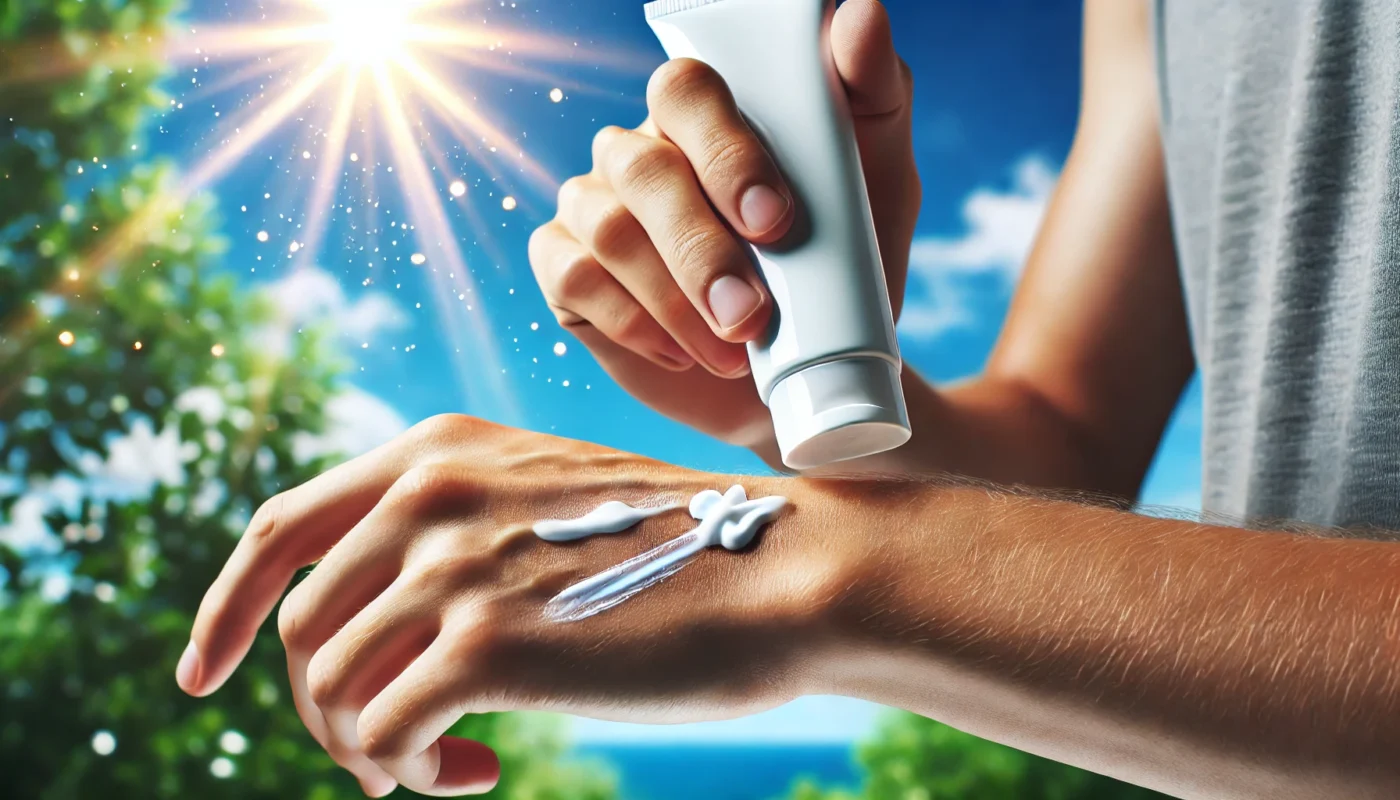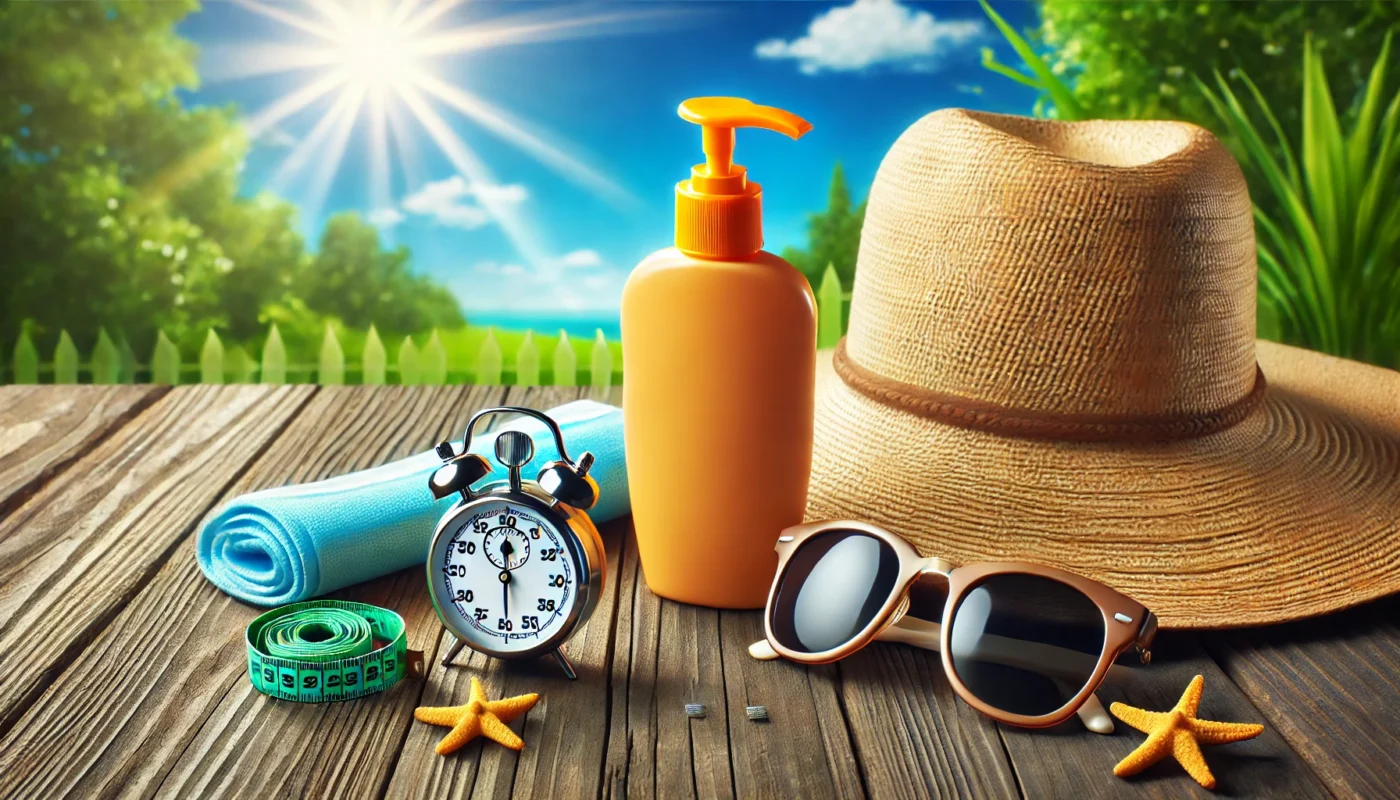Myths surrounding sunscreen abound, leading to confusion about how often and how much should be applied. In this section, we’ll explore prevalent sunscreen myths and clarify the facts based on scientific research and expert recommendations.
You may also like: Essential Tips for Sun Protection Daily
Myth 1: A Single Application Lasts All Day
One of the most prevalent myths is that applying sunscreen once in the morning is sufficient for the entire day. In reality, the effectiveness of sunscreen diminishes over time due to factors like sweat, water exposure, and natural degradation.
Factors Leading to Degradation
Sunscreen’s protective agents, such as zinc oxide and titanium dioxide, can break down when exposed to environmental factors like sunlight, humidity, and heat. This breakdown reduces their ability to protect the skin effectively, necessitating reapplication to maintain coverage.
The Role of Physical Activity
Engaging in physical activities can lead to sweating, which can physically remove sunscreen from the skin. Whether you’re jogging, playing sports, or doing outdoor chores, it’s important to reapply sunscreen to ensure continued protection.
Water and Sunscreen
Water activities, such as swimming, can wash away sunscreen, even if it’s labeled as water-resistant. Reapplication after towel drying is essential to ensure the skin remains protected from UV radiation during and after water exposure.
The Science Behind Reapplication
According to dermatologists, sunscreen should be reapplied every two hours, or more frequently if swimming or sweating. The protective agents in sunscreen, such as zinc oxide and titanium dioxide, can break down, reducing their efficacy. Additionally, physical activities and water can physically remove sunscreen from the skin, leaving you unprotected.
Understanding the Two-Hour Rule
The recommendation to reapply sunscreen every two hours is based on studies showing that the effectiveness of sunscreen decreases significantly after this period. This rule is a general guideline that helps maintain adequate skin protection throughout the day.
Expert Recommendations
Dermatologists and skincare experts emphasize that reapplication is crucial for maintaining effective UV protection. They suggest setting reminders or using apps to ensure timely reapplication, especially during prolonged outdoor activities.
Reapplication Techniques
To reap the benefits of sunscreen reapplication, it’s important to apply a generous amount evenly across all exposed skin. Pay special attention to often-missed areas like the ears, neck, and the tops of your feet.
Myth 2: Sunscreen Is Only for Sunny Days
Many people believe sunscreen is only necessary on bright, sunny days. However, up to 80% of UV rays can penetrate clouds, meaning you can still sustain sun damage on overcast days.
The Hidden Dangers of Cloudy Days
Cloud cover can create a false sense of security, leading people to skip sunscreen application. However, UV rays can penetrate clouds and cause sunburn and long-term skin damage. Overcast days can be deceptive, making regular sunscreen use imperative.
UV Radiation Year-Round
UV radiation isn’t limited to sunny weather; it can be a threat year-round. Winter sports enthusiasts, for example, are exposed to UV rays reflected off snow, increasing the risk of sunburn and skin damage in colder months.
Indoor UV Exposure
Even when indoors, UV exposure can occur through windows. UVA rays, in particular, can penetrate glass and reach the skin, making indoor sunscreen application a wise choice for comprehensive protection.

Understanding UV Radiation
Ultraviolet (UV) radiation is composed of UVA and UVB rays. UVA rays, which account for 95% of the UV radiation reaching the Earth’s surface, can penetrate the skin deeply and contribute to aging and skin cancer. UVB rays are responsible for sunburn and can vary in intensity depending on the time of day and season. Therefore, daily application of sunscreen is crucial regardless of the weather.
The Impact of UVA Rays
UVA rays penetrate the skin more deeply than UVB rays, leading to premature aging, wrinkles, and skin damage. They are present throughout the day and year-round, making daily sunscreen use essential.
UVB Rays and Sunburn
UVB rays cause sunburn and play a significant role in the development of skin cancer. Their intensity varies with time, season, and geographical location, but they are harmful even on cloudy days.
Comprehensive UV Protection
To achieve comprehensive protection, use a broad-spectrum sunscreen that shields against both UVA and UVB rays. Such products offer a more complete defense against the harmful effects of UV radiation.
Myth 3: A Higher SPF Means You Can Apply Less Frequently
SPF, or Sun Protection Factor, measures how well a sunscreen will protect skin from UVB rays, the kind of radiation that causes sunburn. A common misconception is that higher SPF values allow for less frequent application.
Understanding SPF Numbers
SPF numbers indicate the level of protection against UVB rays but do not reflect protection duration. For instance, SPF 30 blocks 97% of UVB rays, while SPF 50 blocks 98%. The slight difference does not alter reapplication needs.
The Importance of Regular Reapplication
Regardless of SPF, sunscreen should be reapplied every two hours to maintain protection. Environmental factors, physical activity, and natural degradation necessitate consistent application to ensure effectiveness.
Choosing the Right SPF
Selecting an SPF should be based on your skin type, activity level, and duration of sun exposure. For everyday use, an SPF of 30 or higher is generally recommended, but individual needs may vary.
How to Use Sunscreen Effectively
Understanding the correct application of sunscreen is vital to maximize its protective benefits. In this section, we’ll delve into the specifics of effective sunscreen use to ensure optimal protection.
How Much Sunscreen Should You Use?
The general rule of thumb is to use about one ounce of sunscreen (approximately a shot glass full) to cover the entire body. For the face, a nickel-sized amount is recommended. Applying less than the recommended amount can significantly reduce the effectiveness of the sunscreen.
Measuring the Right Amount
Using the correct amount of sunscreen is crucial for achieving the protection indicated on the label. A shot glass worth of sunscreen ensures full-body coverage, while a nickel-sized amount is adequate for facial application.
Importance of Even Coverage
Ensure even application by spreading sunscreen uniformly across all exposed skin areas. Pay extra attention to often-missed spots like the back of the neck, ears, and tops of the feet for comprehensive protection.
Adjusting for Body Size
Individuals with larger body sizes may require more than the standard amount of sunscreen to achieve adequate coverage. Adjust your application to ensure every part of your skin is adequately protected.
When and How to Reapply Sunscreen
Reapply sunscreen every two hours, or immediately after swimming, sweating, or towel drying. For optimal protection at the beach or during outdoor activities, consider using a water-resistant sunscreen, which can provide some level of protection even when wet.
Timing Your Reapplication
Set a timer or use a smartphone app to remind you to reapply sunscreen every two hours. This practice ensures that you maintain continuous protection throughout the day, especially during outdoor activities.
Post-Activity Reapplication
After swimming, sweating, or towel drying, reapply sunscreen immediately to restore lost protection. Water-resistant sunscreens are designed to withstand some water exposure, but they still require reapplication for maximum efficacy.
Choosing Water-Resistant Formulas
For beach days or water activities, opt for water-resistant sunscreen formulas. These products offer enhanced protection against water and sweat, providing peace of mind during active pursuits.

Sunscreen and Your Daily Routine
Incorporate sunscreen into your daily skincare regimen by applying it every morning, regardless of your plans. This habit ensures you are always protected, even during incidental sun exposure, such as a walk to the car or during a coffee break.
Making Sunscreen a Habit
Integrate sunscreen application into your morning routine as a non-negotiable step, just like brushing your teeth. Consistent use ensures you’re shielded from UV damage, even during brief outdoor activities.
Complementing Other Skincare Steps
Apply sunscreen after your moisturizer but before makeup to ensure it forms an effective barrier against UV rays. Choose products that complement your skincare routine for seamless integration.
Sunscreen for All Skin Types
Select sunscreens that cater to your skin type, whether oily, dry, or sensitive. With a variety of formulations available, you can find a product that suits your needs and encourages daily use.
Sunscreen and Holistic Health
Sunscreen plays a pivotal role in a holistic approach to health and wellness. It not only protects against sunburn but also reduces the risk of skin cancer and prevents premature aging. Integrating sunscreen use with other skin-protective measures, such as wearing hats and sunglasses and seeking shade during peak sun hours, enhances overall skin health.
The Role of Antioxidants
Consider boosting your skin’s defense by using sunscreens that contain antioxidants. These compounds help protect the skin from free radicals, which are unstable molecules that can cause cellular damage. Antioxidants like vitamin C and E can be particularly beneficial when used in conjunction with sunscreen, providing an added layer of protection against UV-induced damage.
Antioxidants in Sunscreen
Many sunscreens now incorporate antioxidants to enhance their protective properties. Ingredients like vitamin C, E, and green tea extract neutralize free radicals, offering an additional defense against environmental stressors.
The Synergy of Sunscreen and Antioxidants
Using sunscreens with antioxidants creates a synergistic effect, enhancing skin protection and reducing oxidative stress. This combination helps prevent premature aging and maintains youthful, healthy skin.
Incorporating Antioxidants into Skincare
In addition to sunscreen, consider using antioxidant-rich serums or moisturizers in your skincare routine. Layering these products provides comprehensive protection against UV damage and supports skin health.
Sun Protection Beyond Sunscreen
While sunscreen is a critical component, additional protective measures can further safeguard your skin. Wearing wide-brimmed hats, UV-blocking sunglasses, and seeking shade during peak sun hours complement sunscreen use.
Clothing as a Barrier
Clothing with a high UPF (Ultraviolet Protection Factor) rating can block UV rays effectively. Opt for long sleeves, pants, and hats for added protection during extended sun exposure.
Seeking Shade
Avoid direct sunlight during peak hours, typically between 10 a.m. and 4 p.m. Seek shade under umbrellas, trees, or awnings to minimize UV exposure during these times.
The Importance of Sunglasses
Protect your eyes and the delicate skin around them by wearing sunglasses with 100% UV protection. This simple step prevents UV-related eye damage and enhances overall sun safety.

Conclusion
In the realm of health and wellness, understanding the science and facts behind sunscreen application is crucial. Dispelling the myths and embracing evidence-based practices ensures that you are adequately protected from the sun’s harmful effects. Regular and proper application of sunscreen is a simple yet profound step towards maintaining healthy skin and overall well-being.
By incorporating these insights into your daily routine, you can confidently enjoy the outdoors while safeguarding your health. Remember, when it comes to sun protection, consistency and correct application are key. Embrace these practices, and you’ll be well-equipped to enjoy the sun safely and healthily.
Further Reading:
Ask the Expert: How Often Do I Need to Reapply Sunscreen If I’m Indoors All Day?
Summer Is Almost Over—Do I Still Need To Wear Sunscreen? (Hint: Yes)
Sunscreen application to the face persists beyond 2 hours in indoor workers: an open-label trial
sunscreen, sun protection, UV rays, SPF, skincare, reapply sunscreen, outdoor health, sun safety, skin cancer prevention, skincare routine, antioxidants, water-resistant sunscreen, sunscreen myths.
Important Note: The information contained in this article is for general informational purposes only, and should not be construed as health or medical advice, nor is it intended to diagnose, prevent, treat, or cure any disease or health condition. Before embarking on any diet, fitness regimen, or program of nutritional supplementation, it is advisable to consult your healthcare professional in order to determine its safety and probable efficacy in terms of your individual state of health.
Regarding Nutritional Supplements Or Other Non-Prescription Health Products: If any nutritional supplements or other non-prescription health products are mentioned in the foregoing article, any claims or statements made about them have not been evaluated by the U.S. Food and Drug Administration, and such nutritional supplements or other health products are not intended to diagnose, treat, cure, or prevent any disease.

